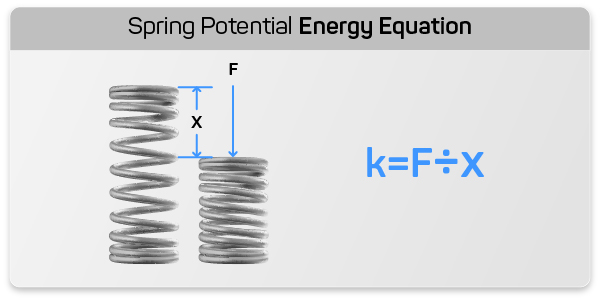Understanding the Physics of Springs: Key Formulas and Concepts
الجسم
Springs are fundamental mechanical components that play a critical role in many engineering systems, from car suspensions to mechanical watches and industrial machinery. Their behavior is governed by a few essential principles of physics, which can be expressed through various Equations for Springs. In this article, we'll break down the key concepts, including the spring rate formula, spring constant formulas, and the widely-used Spring Force Formula.
What Is a Spring Constant?
The spring constant, referred to as k, is a characteristic feature of the stiffness of a spring. It is defined by the amount of force necessary to either compress or elongate the spring by a specific unit of length. This is the place where the elasticity is determined, and therefore, the higher the value of the spring constant, the stiffer the spring is. It is crucial in determining the behavior of springs under conditions of applied force and is used in the derivation of some of these spring constant formulas.

The Spring Force Formula
There are a few fundamental relations pertinent to the springs and among them the Hooke’s Law is most prominent, which determines the force of a spring.
F = -kx
Where:
● F is the force exerted by the spring
● k is the spring constant (N/m), and
● x is the displacement from the spring’s equilibrium position
The Spring Force Formula: spring force is directly related to displacement, meaning that the more you compress it the harder it is to push it. The negative sign denotes that the force is a restoring force and acts in a direction opposite to the displacement.
Spring Rate Formula Explained
The spring rate is directly connected with the spring constant and is calculated according to the spring rate formula. In auto and mechanical engineering, “spring rate is used in a common sense to mean the force which must be applied to the spring to compress it one inch or one millimeter. The formula is:
Spring Rate (k) = ΔF / Δx
Where:
● ΔF is the change in force
● Δx is the change in length (compression or extension)
This formula is useful in selecting springs for various uses in an appreciable way. For instance, in designing vehicles, the engineers estimate the amount by which the spring would compress, based on the spring rate.

Common Spring Constant Formulas
However, there are simpler equations used apart from Hooke’s Law, which are based on the type of spring and geometry:
1. For a cylindrical helical spring (compression or tension):
k = (Gd⁴) / (8D³n)
● G is the shear modulus
● D is the wire diameter
● D is the coil diameter
● N is the number of active coils
2. For a beam or cantilever spring:
k = 3EI / L³
● E is Young’s modulus
● I is the moment of inertia
● L is the length of the beam
These formulations provide engineers with the tools to custom-design springs to fit unique load and displacement necessities.
Final Thoughts on the Spring Equation
The study of springs is not only foundational in physics but also vital in sensible engineering. Whether you are analyzing a trampoline, a suspension absorber, or a clock mechanism, knowledge of the Spring Equation and its versions allows better layout and analysis. From the Spring Force Formula to the spring rate system, those standards are a critical gear in any engineer's toolbox.






تعليقات